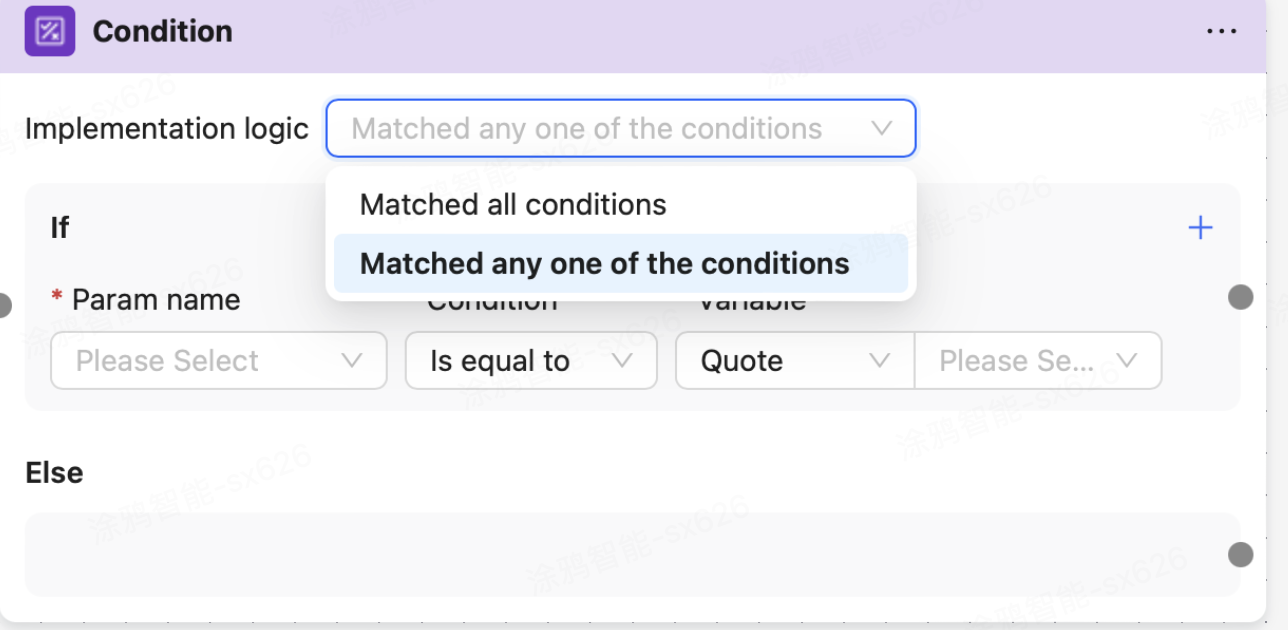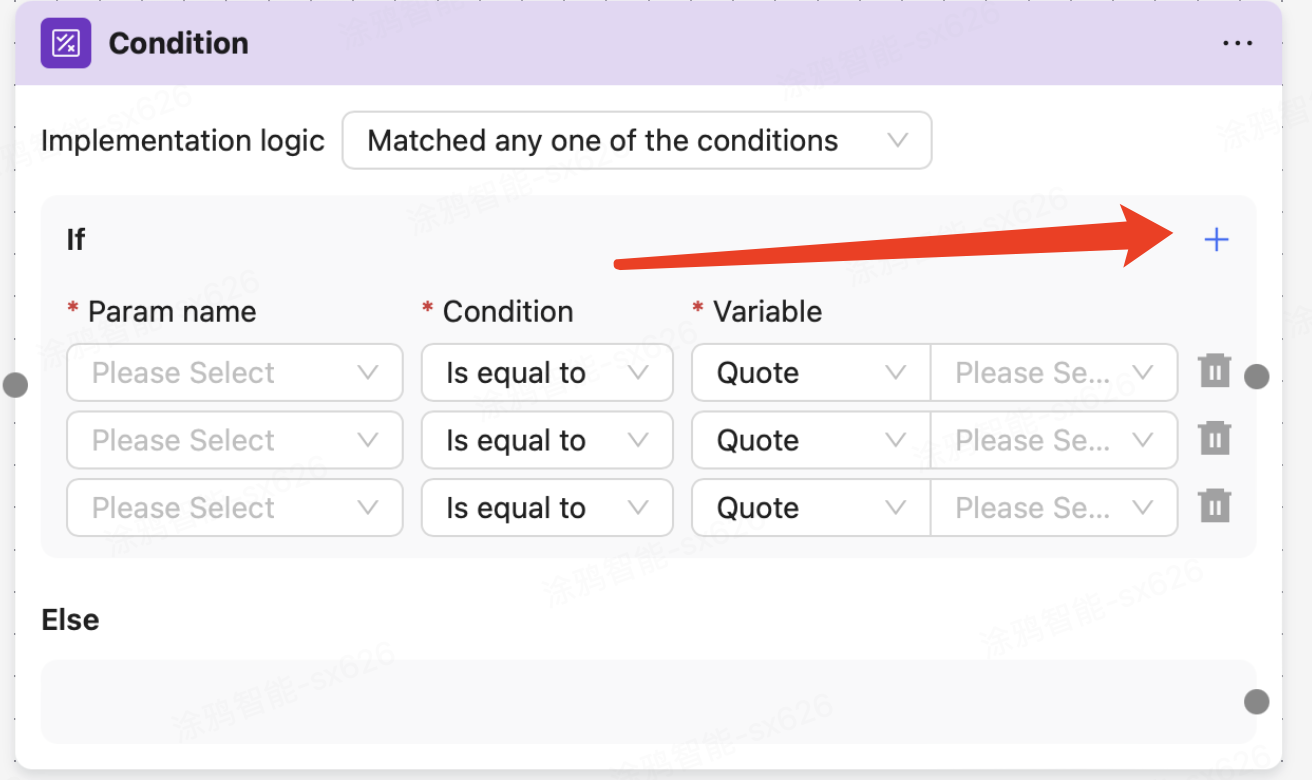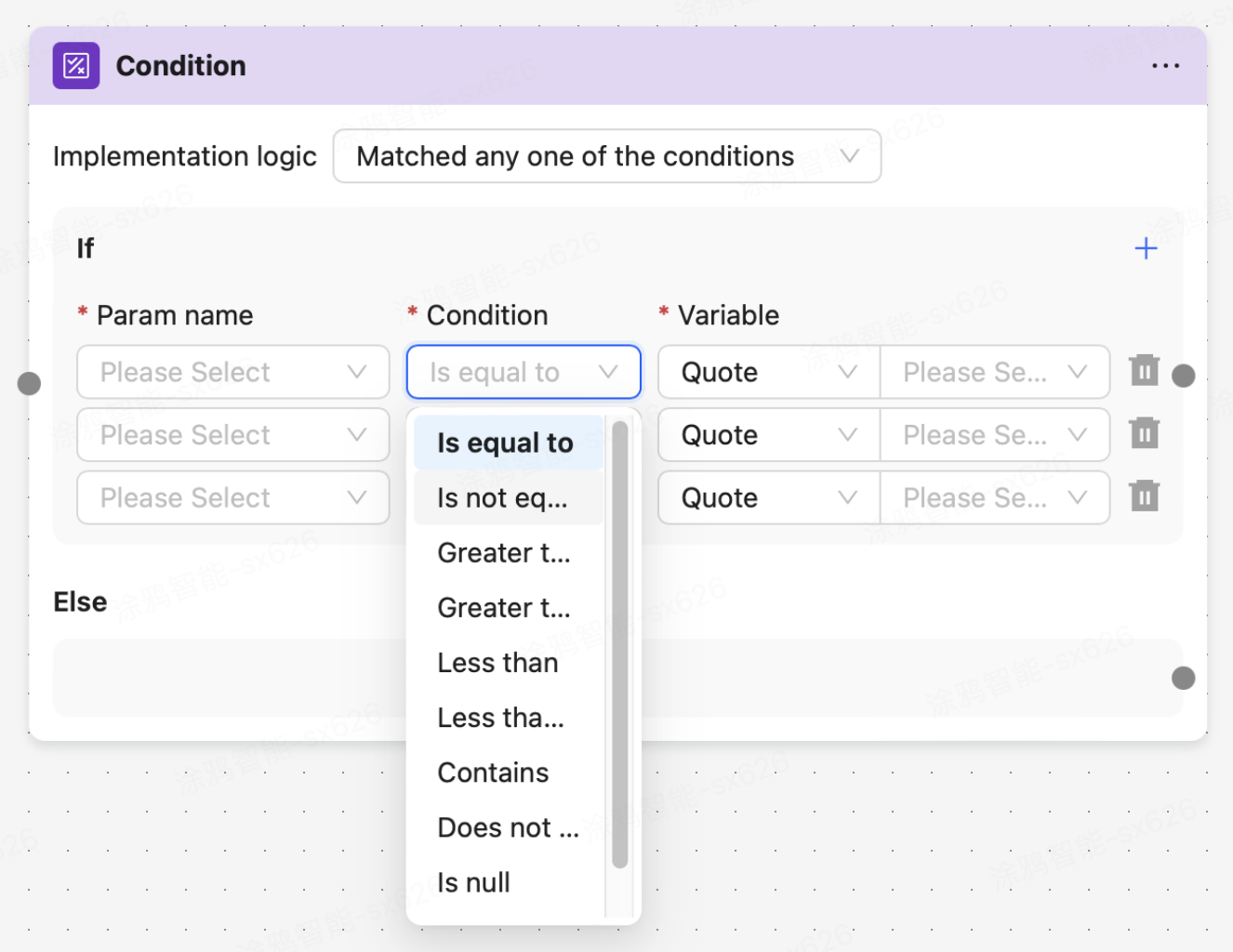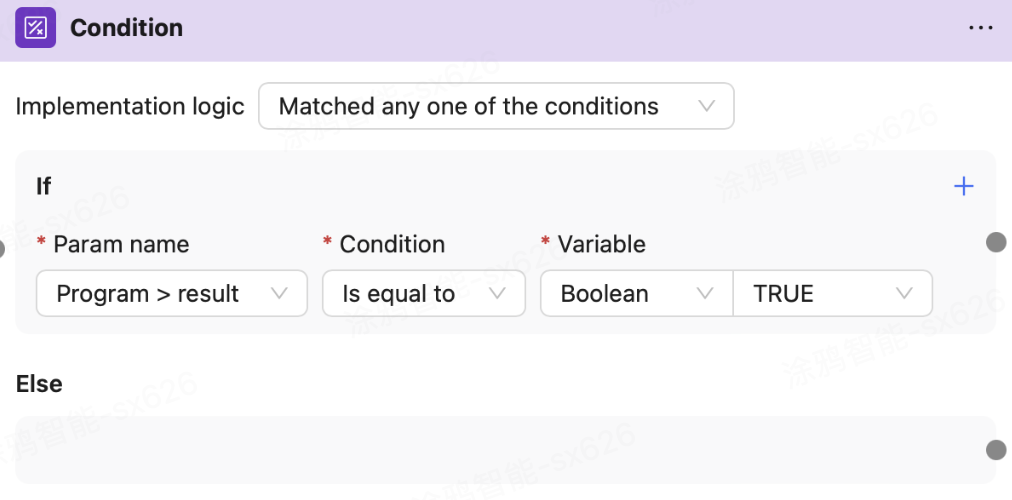3.2.1. Condition
The Condition node implements the functionality of an if statement by evaluating different conditions on input elements, and it can split a single connection line into two.
Node Logic

Firstly, the Condition node has two execution logics. One is that as long as any condition in the if statement is met, the upper node line will be connected. The other is that the upper node is connected when all conditions in the if statement are met. In other cases, the path will lead to the lower node. Clicking the plus button at the top right of the if statement can add more conditions.

Conditions

As shown, the Condition node includes:
| Is equal to | Is not equal to | Greater than | Greater than or equal to | Less than | Less than or equal to | Contains | Does not contain | Is null | Is not null |
|---|---|---|---|---|---|---|---|---|---|
| Equal to | Not equal to | Greater than | Greater than or equal to | Less than | Less than or equal to | Contains | Does not contain | Is null | Is not null |
These conditions.
Example Explanation

For example, when creating intrusion detection, the role of the Condition node is to determine whether the Human Detection node outputs a True Boolean value, thereby deciding whether to alert the user or directly end the program.
Summary
The Condition itself does not output variables. Its main function is to change the original single output result into two different directional node outputs through condition evaluation.